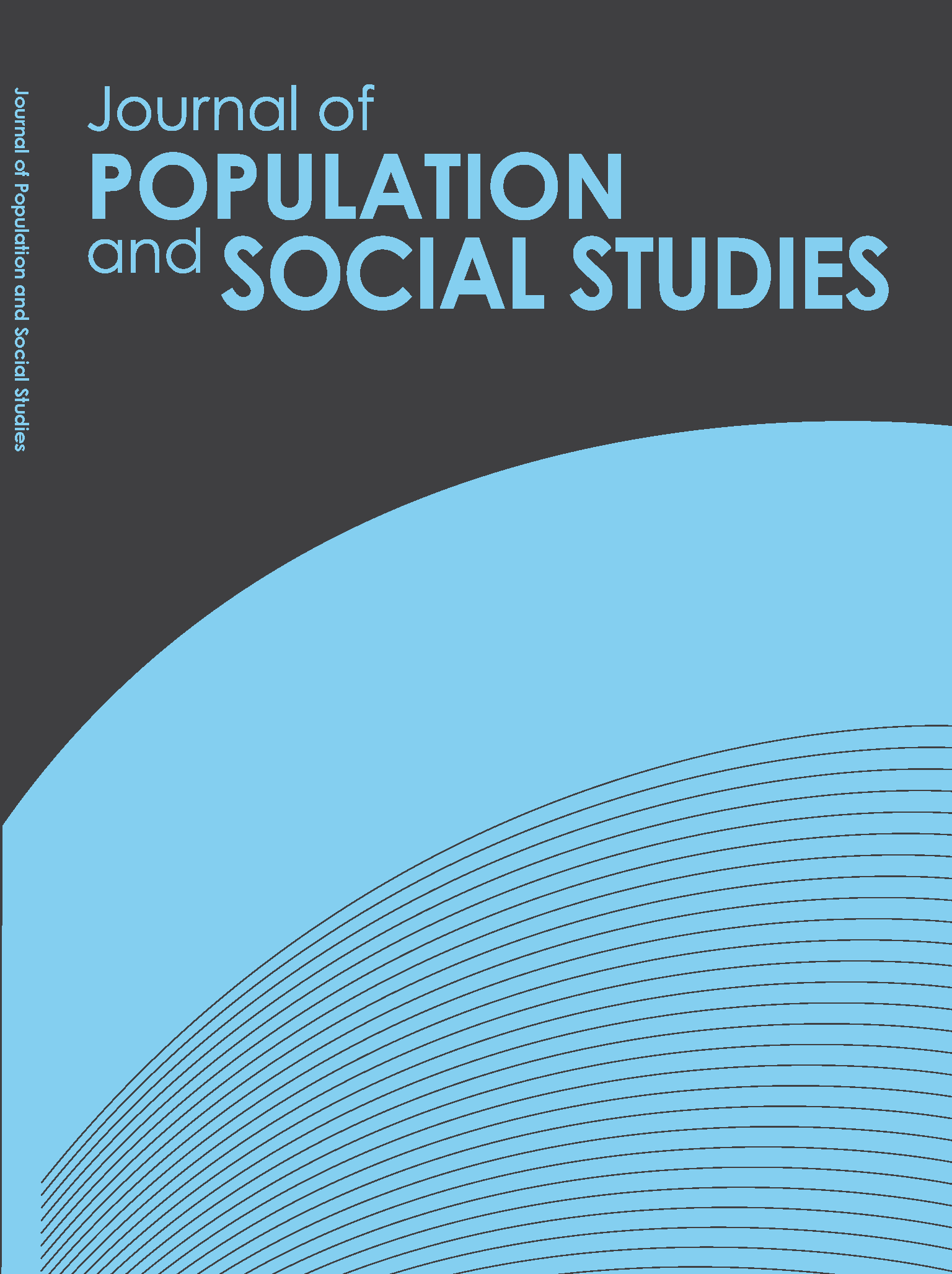Declining Desire for Childbearing in Couples with Higher Education: A Qualitative Study in Iran
Main Article Content
Abstract
Iran has experienced a significant decline in the fertility rate over the past decades. One of the principal reasons for this decline is decreased willingness to bear children, especially in the highly educated couples subset. For that reason, developing and implementing a successful population policy is essential to increase fertility in this subpopulation. The study aimed at explaining the unwillingness to bear children in this subgroup. The qualitative research was conducted using a content analysis approach based on the data acquired using in-depth and semi-structured interviews with couples with an educational level of master’s and above, and without children or having one child. In this study, in total, 40 couples (40 women and 40 men) were interviewed. Of the participants, 57.5% had one child. Four main themes were developed using conventional content analysis: rationality and awareness, gender equality and willingness to bear children, cultural and social renovation, and concern about the child’s future. The results indicated that different factors such as economic, social, and cultural reasons and less hope in the future affect unwillingness to bear children in highly educated couples. Taking into account, these factors are essential at the time of development and implementation of pro-natalist policies.
Article Details
References
• Abbasi-Shavazi, M. J. (2017). Population trends and situation in the Islamic Republic of Iran (2nd ed.). National Population Studies & Comprehensive Management Institute.
• Afshari, Z. (2015). برابری جنسیتی و باروری در ایران [Gender equality and fertility in Iran]. Women in Development and Politics, 13(2), 245-262. https://dx.doi.org/10.22059/jwdp.2015.55992
• Azizi-Zeinalhajlou, A., Amini, A., & Tabrizi, J. S. (2015). Consequences of population aging in Iran with emphasis on its increasing challenges on the health system (literature review). Depiction of Health, 6(1), 54-64. https://doh.tbzmed.ac.ir/Article/doh-117
• Baki-Hashemi, S., Kariman, N., Ghanbari, S., Pourhoseingholi, M. A., & Moradi, M. (2018). Factors affecting the decline in childbearing in Iran: A systematic review. Advances in Nursing & Midwifery, 27(4), 11-19. https://dx.doi.org/10.29252/ANM-027044
• Behboudi-Gandevani, S., Ziaei, S., Farahani, F. K., & Jasper, M. (2015). The perspectives of Iranian women on delayed childbearing: A qualitative study. Journal of Nursing Research, 23(4), 313-321. https://dx.doi.org/10.1097/JNR.0000000000000084
• Behjati-Ardakani, Z., Navabakhsh, M., & Hosseini, S. H. (2017). Sociological study on the transformation of fertility and childbearing concept in Iran. Journal of Reproduction & Infertility, 18(1), 153-161. https://www.ncbi.nlm.nih.gov/pmc/articles/PMC5359852/
• Chamani, S., Moshfeq, M., & Shekarbeigi, A. (2015). The study of challenges pertaining to the child bearing in Tehran City with the emphasis on the mixed method. Gender and Family Studies, 3(1), 9-38. http://www.jgfs.ir/article_43235_en.html
• Craig, J. (1994). Replacement level fertility and future population growth. Population Trends, (78), 20–22. https://pubmed.ncbi.nlm.nih.gov/7834459/
• Esping-Andersen, G., & Billari, F. C. (2015). Re-theorizing family demographics. Population and Development Review, 41(1), 1-31. https://doi.org/10.1111/j.1728-4457.2015.00024.x
• Glaser, B, G., Strauss, A. L., & Strutzel, E. (1968). The Discovery of Grounded Theory; Strategies for Qualitative Research. Nursing Research, 17(4), 364. https://journals.lww.com/nursingresearchonline/Citation/1968/07000/The_Discovery_of_Grounded_Theory__Strategies_for.14.aspx.
• Haerimehrizi, A. A., Tavousi, M., Sadighi, J., Motlagh, M. E., Eslami, M., Naghizadeh, F., & Montazeri, A. (2017). Reasons for fertility desire and disinterest among Iranian married adults: A population-based study. Payesh (Health Monitor), 16(5), 637-645. http://payeshjournal.ir/browse.php?a_id=86&sid=1&slc_lang=en
• Keshavarz, M., Shariati, M., Ebadi, A., & Behbudi Moghadam, Z. (2018). Desire and attitude to marriage among unmarried Iranian youth: A qualitative study. International Journal of Women's Health and Reproduction Sciences, 6(4), 425-431. https://doi.org/10.15296/ijwhr.2018.71
• Kolk, M. (2019). Weak support for a U-shaped pattern between societal gender equality and fertility when comparing societies across time. Demographic Research, 40, 27-48. https://www.jstor.org/stable/26726991
• Kravdal, Ø. (2002). The impact of individual and aggregate unemployment on fertility in Norway. Demographic Research, 6, 263-294. http://www.jstor.org/stable/26348048
• Lundberg, S., Pollak, R. A., & Stearns, J. (2016). Family inequality: Diverging patterns in marriage, cohabitation, and childbearing. Journal of Economic Perspectives, 30(2), 79-102. https://doi.org/10.1257/jep.30.2.79
• Mahmoudiani, S. (2020). Explaining the married women’s fertility in reproductive ages in Iran using Hierarchical Linear Model. Payesh (Health Monitor), 19(3), 289-297. https://doi.org/10.29252/payesh.19.3.289
• Morse, J. M. (1994). Designing funded qualitative research. In N. K. Denzin & Y. S. Lincoln (Eds.), Handbook of qualitative research (pp. 220–235). Sage Publications, Inc.
• Oshrieh, Z., Tehranian, N., Ebrahimi, E., Keramat, A., Hassani, M., & Kharaghani, R. (2019). Childbearing intention and its associated factors among adolescent girls: A narrative review. Iranian Journal of Nursing and Midwifery Research, 25(1), 7–11. https://doi.org/10.4103/ijnmr.IJNMR_180_18
• Razeghi-Nasrabad, h. B, & Abbasi-Shavazi, M. J. (2020). Ideal fertility in Iran: A systematic review and meta-analysis. International Journal of Women’s Health and Reproduction Sciences, 8(1), 10-18. https:// 10.15296/ijwhr.2020.02
• Roudi, F., Azadi, P., & Mesgaran, M. (2017). Iran’s population dynamics and demographic window of opportunity. Working Paper 4, Stanford Iran 2040 Project, Stanford University. https://iranian-studies.stanford.edu/iran-2040-project/publications/irans-population-dynamics-and-demographic-window-opportunity
• Statistical Center of Iran. (2018). Selected Findings of the 2016 National Population and Housing Census. Statistical Center of Iran. https://www.amar.org.ir/Portals/1/census/2016/Census_2016_Selected_Findings.pdf
• Statistical Center of Iran. (2020). شیب نزولی میزان باروري كل ايران از 96 تا 98 [Descending slope of the total fertility rate of Iran from 2017to 2019]. https://www.amar.org.ir/Portals/0/News/1399/khabar%20barvari.pdf
• United Nations. (2017). World Fertility Report 2015 - Highlights (ST/ESA/SER.A/415). https://www.un.org/development/desa/pd/sites/www.un.org.development.desa.pd/files/files/documents/2020/Feb/un_2015_worldfertilityreport_highlights.pdf.
• United Nations. (2020). World Fertility and Family Planning 2020: Highlights (ST/ESA/SER.A/440). https://www.un.org/en/development/desa/population/publications/pdf/family/World_Fertility_and_Family_Planning_2020_Highlights.pdf.
• Zhang, Y. (2018). A qualitative study of Chinese women’s fertility desire in light of the recent two-child policy. [Master Thesis] Lund University. https://lup.lub.lu.se/luur/download?func=downloadFile&recordOId=8949908&fileOId=8949911
• Zhou, Y. (2019). The dual demands: Gender equity and fertility intentions after the one-child policy. Journal of Contemporary China, 28(117), 367-384. https://doi.org/10.1080/10670564.2018.1542219


